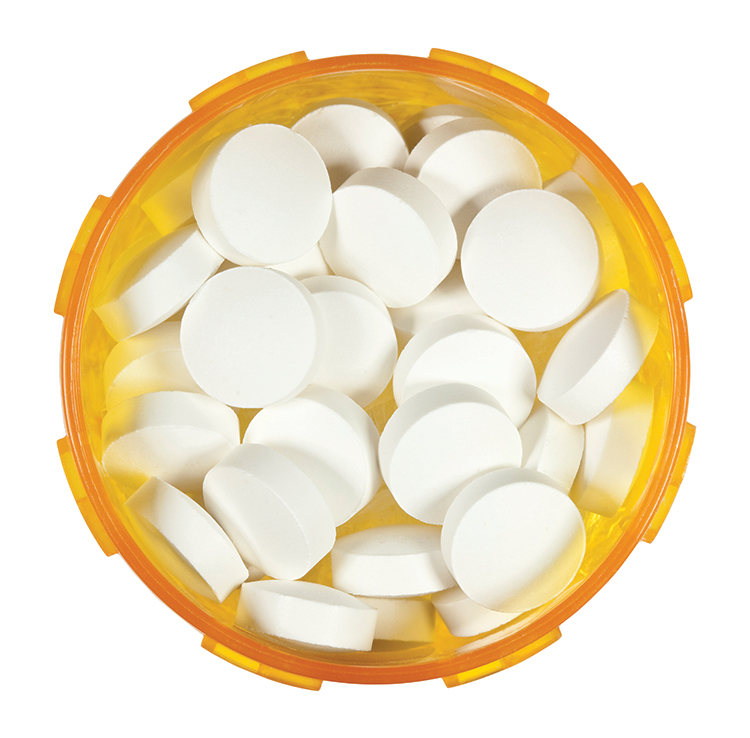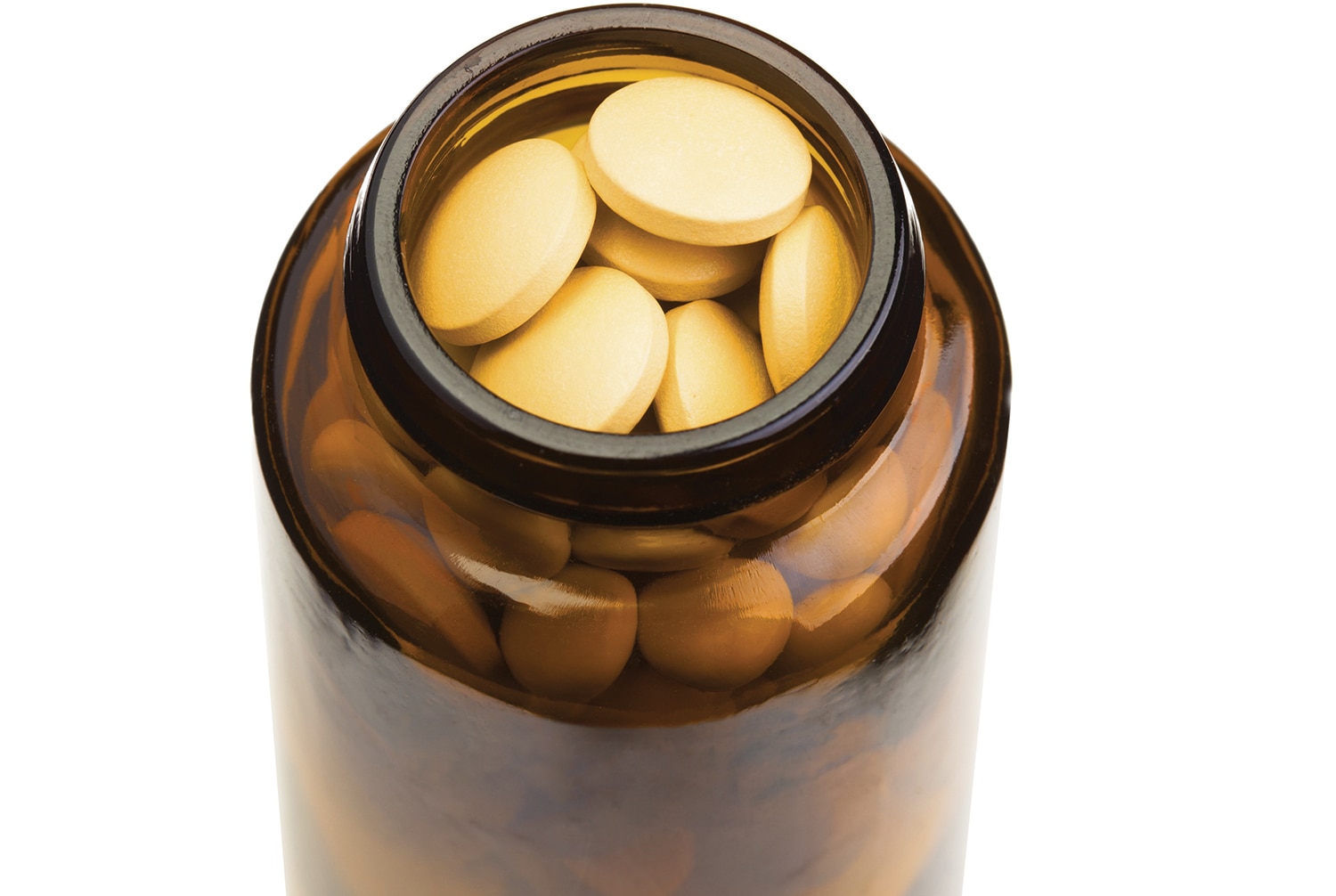BRUCE BLOOM, a dentist turned lawyer turned social entrepreneur, says he never set out to join a growing research effort aimed at turning old drugs into new treatments for hard-to-treat diseases like cancer, but that’s exactly what happened.
Bloom leads a nonprofit called Cures Within Reach that has been matching funders with medical research projects for more than 15 years. In 2009, he and his colleagues undertook a routine analysis of their work to find out which of their funded research projects already had started helping patients.

They were surprised to find that the “scientifically interesting” projects—those aimed at creating something new—had yet to show any benefit in treating diseases. They were also stunned to realize that many projects based on “repurposing”—converting existing treatments to new uses, including treating cancer—”were being used clinically to help patients,” Bloom says.
“Repurposing” has become a buzzword in recent years, in part because it can be a less expensive and faster approach to get drugs to patients, when compared with developing new drugs from scratch. By using drugs that have already been developed and tested for safety, researchers can bypass years of costly work. Biologists, chemists, epidemiologists and oncologists are working to identify existing compounds created to treat other conditions that have the most potential for cancer prevention or treatment. Though these efforts may not yield a cure for cancer hiding in plain sight, they may generate ways to lower the cost of treatment or increase the effectiveness of cancer drugs. And in a climate of escalating costs for new drugs, finding smart ways to use what is already available appeals to researchers, clinicians and patients alike.
Across all areas of medicine, more than 2,000 unique chemical compounds have been approved for use as drugs by the U.S. Food and Drug Administration (FDA). “Actually, there are a lot more drugs than that, but all the others are essentially copycats of those 2,000,” says medical oncologist Jenny Chang of the Methodist Cancer Center in Houston.
Repurposing drugs works both ways as cancer drugs treat other illnesses.
Cancer researchers are looking for ways to repurpose existing drugs for cancer care, but the research goes the other way as well. The same genetic mutations and pathways targeted by cancer drugs may play a critical role in other diseases or conditions, meaning cancer drugs could help a larger patient population. Here are some examples of both approved and promising medications:
- In 1997, the FDA approved Rituxan (rituximab) for patients with B–cell non-Hodgkin lymphoma who do not respond to conventional chemotherapy. In 2006, the drug received approval for treatment in people with rheumatoid arthritis who do not respond to existing treatments.
- In 1999, the FDA approved Targretin (bexarotene) for patients with T-cell lymphoma. In the March 23, 2012, issue of Science, researchers from Case Western Reserve University in Cleveland reported that mouse studies suggested the drug could improve symptoms in patients with Alzheimer’s disease. A phase II clinical trial is investigating the drug’s effectiveness and safety in people.
- In 2005, the FDA approved Aromasin (exemestane), for postmenopausal women with hormone-sensitive breast cancer. In the Nov. 19, 2013, Proceedings of the National Academy of Sciences, Johns Hopkins University researchers reported promising results from cell studies suggesting the drug might help protect vulnerable cells from inflammation and UVA radiation damage, and possibly reduce the risk of chronic diseases that arise from inflammation.
- In 2011, the FDA approved Eylea (aflibercept) for patients with macular degeneration, which causes blindness in older adults. In 2012, the drug, under the name Zaltrap, was approved for patients with metastatic colorectal cancer whose disease progresses after, or whose disease is resistant to, standard platinum-based therapies. In the Sept. 15, 2013, issue of Nature Medicine, Stanford University researchers reported that the drug targets a molecular pathway associated with type II diabetes, suggesting a third use for the compound.
The time and effort required to take a new drug from the lab to the clinic are staggering. According to the Pharmaceutical Research and Manufacturers of America (PhRMA), most drugs require between three and six years of development after discovery in the lab before they are ready to be tested for efficacy and safety. Only one in 50 drugs that start with animal and lab testing are ever deemed safe and effective enough to be tested on people. And of all the drugs that enter phase I clinical trials with human participants—designed to determine a safe dosage and measure side effects—most of those drugs never make it to phase III clinical trials where they are studied for their effectivenss. Only about one in 20 drugs in phase I trials eventually get FDA approval. Pharmaceutical companies spend billions of dollars to shepherd a drug from development through the approval process.
Most drugs were designed with a single purpose in mind—aspirin for pain relief, for example, or metformin to treat type II diabetes. Others were found not to work for their intended purposes and ended up languishing in the vaults of pharmaceutical companies. Repurposing is an opportunity to give these compounds a new life.
Chang offers a hypothetical example: A drug created for a certain condition—say, gout or heart failure—undergoes millions of dollars of development, testing in animal studies, and phase I and II human studies, but fails in a phase III study. That could be the end of the drug. But if geneticists analyze the drug’s makeup and find that it has a molecular action against a critical pathway in cancer, potentially “you can take a drug to market and save close to 20 or 30 years of work,” she says. “That gets the treatment to a patient much faster, and that’s all we want.”
Repurposing is not a new idea, but its use in cancer research received a boost in 2003, when researchers unraveled the human genome, allowing them to study the genetic structure of tumors and the molecular mechanisms of treatments.
“Now that we’ve started to understand the human genome, we are able to figure out the pathways that drive cancer,” says Chang, “and we’re able to match those pathways to those 2,000 drugs.” The idea behind research like Chang’s is to use computer programs, capable of handling a lot of data, to identify existing safe and effective molecular compounds that can shut off the molecular switches that help cancer grow and spread. These researchers are not inventing new compounds from scratch. Instead, they’re engaged in a kind of high-tech recycling.
The field is growing. In a review article published in the September 2013 Trends in Pharmacological Sciences, researchers from the University of Texas M. D. Anderson Cancer Center in Houston and the University of Texas at Austin reported that “drugs originally identified as antitussive, sedative, analgesic, antipyretic, antiarthritic, anesthetic, antidiabetic, muscle relaxant, immunosuppressant, antibiotic, antiepileptic, cardio-protective, antihypertensive, erectile function enhancing, or angina relieving” are finding new life in cancer research.
Aspirin, metformin and other drugs are finding new uses in cancer medicine.
Repurposing has become a critical part of cancer research. “There are no limits in terms of the number of drugs you can look at,” says epidemiologist Alex Walker at the University of Nottingham in the United Kingdom. “You can take all cancers and all prescribed drugs and try to pick out which ones are protective against cancer.” Some of the drugs that researchers are mining for crossover uses in cancer include:
Aspirin
Since the 1970s, observational studies have suggested that aspirin can reduce a person’s risk of colorectal cancer. Randomized controlled trials have backed up those initial findings. More recent studies have found that even doses as small as 75 milligrams a day confer benefits. However, the evidence so far has not led the U.S. Preventive Services Task Force to update its guidelines, which recommend against using aspirin for cancer prevention in people with average risk.
Information to help guide decision-making on the risks and benefits of aspirin in the elderly, who may benefit the most from its anti-cancer properties, is expected to come from the ASPREE (Aspirin in Reducing Events in the Elderly) study, which should be completed in 2018.
Metformin
Population studies from the 2000s pointed to a connection between taking metformin, a diabetes drug that reduces circulating levels of glucose and insulin in the blood, and a reduced risk of some types of cancer, including breast and pancreatic cancer. Lab studies show that the drug can slow or stop the growth of cancer cells. Studies in humans are now underway to determine whether the drug has a role in cancer prevention or treatment.
“All of the epidemiology work published to date is in people who have been using metformin for the treatment of diabetes,” says cancer biologist Brandy Heckman-Stoddard at the National Cancer Institute in Bethesda, Md. She says early studies associated taking metformin with a 30 percent reduction in incidence of cancer and a 50 percent reduction in mortality. But in a more recent meta-analysis in PLOS ONE in August 2013, researchers looked at 41 observational studies—encompassing more than a million people—and reported that metformin was associated with a 35 percent reduction in risk of cancer death. Heckman-Stoddard says the NCI is investigating metformin’s molecular mechanism to learn how the drug affects cancer cells.
Chloroquine
Long used in both the prevention and treatment of malaria, chloroquine is an inexpensive and widely available drug that’s getting renewed attention for its potential ability to boost the effectiveness of existing drugs.
Cures Within Reach funded lab research that suggested that chloroquine could improve the effectiveness of the cancer medication Tarceva (erlotinib). The combination is now being studied in a phase II clinical trial at Massachusetts General Hospital in patients with stage IIIB and IV non–small cell lung cancer.
At the Methodist Hospital Cancer Center in Houston, medical oncologist Jenny Chang is leading a phase II trial investigating whether chloroquine improves the effects of chemotherapy in metastatic breast cancer patients for whom treatment with anthracyclines failed.
Blood-pressure Medications
In the Oct. 1, 2013, Nature Communications, tumor biologist Rakesh Jain of the Harvard Medical School and Massachusetts General Hospital and his colleagues reported that angiotensin inhibitors, safe and effective blood pressure medications, could help improve the effectiveness of chemotherapy by opening the notoriously leaky and compressed blood vessels inside solid tumors. Jain notes that, ordinarily, increasing blood flow to a tumor could fuel faster growth, but the same mechanism also could allow immune cells and cancer-killing medications to penetrate deeper into the tumor and work more effectively.
Bloom notes that one hurdle to overcome in repurposing inexpensive generic drugs—rather than those still under patent—is persuading pharmaceutical companies to finance the clinical trials needed to get the drugs approved for new uses. On the surface, such a move wouldn’t seem to reap big profits for drug makers. “Because most of these are generic drugs and no one will make a profit if they actually help, it’s hard to find the money to do a double-blind randomized clinical trial,” he says.
On the other hand, repurposing research suggests that low-cost generics may improve the efficacy of existing drugs still under patent, Bloom says. If that’s the case, the companies could profit from the combination therapy. And patients could benefit, because one potential bonus of repurposing is to make existing therapies more effective, lessening the need for extensive toxic treatments and multiple rounds of costly drugs.
Ultimately, Bloom says, the challenge in cancer treatment is the same as in many areas of health care: improving care while lowering expenses. “Health care costs are becoming such a substantial thing,” he says, and “people are looking for ways to reduce the cost without reducing quality of care. I think repurposing drugs can be a part of that.”
Cancer Today magazine is free to cancer patients, survivors and caregivers who live in the U.S. Subscribe here to receive four issues per year.





